|
Hi, I am a PhD student at University of Texas, Austin where I work with Prof. Roberto Martín-Martín at the RobIn lab on robotics, imitation learning and reinforcement learning. I completed my masters at University of Southern California (USC) where I worked on the problem of large scale robot data collection at the CLVR Lab with Prof. Joseph Lim. I completed my Bachelors in Technology in CSE from IIIT Delhi. Email / Twitter / Google Scholar / CV / Linkedin |

|
|
My research goal is to develop generalist robotics that can do everyday tasks in complex unstructured real-world environments. To this end, my current research focuses on scaling data collection and finding efficient ways of using this data to train generalist robots, especially via imitation. I believe that expanding both expert and autonomous datasets in real-world, supplemented by simulation, is crucial for creating robust generalist robots and kick-start the robot data ’flywheel’. |
|
*: Equal contribution. †: Equal advising. |
|
|
Shivin Dass*, Alaa Khaddaj*, Logan Engstrom, Aleksander Mądry, Andrew Ilyas†, Roberto Martín-Martín† project page / arXiv / code Robotics has amassed increasingly diverse datasets to train generalist policies via imitation learning (IL), but IL performance is highly sensitive to data quality. We introduce DataMIL, a method that uses datamodels to select training samples that most improve policy performance, enabling end-to-end, policy-aware data selection. |
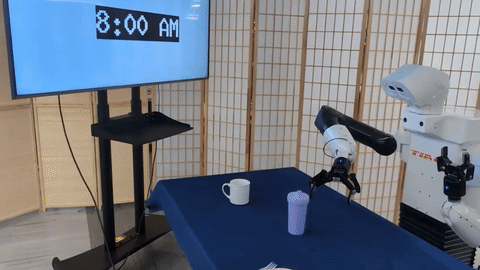
|
Shivin Dass, Jiaheng Hu, Ben Abbatematteo, Peter Stone, Roberto Martín-Martín Conference on Robot Learning (CoRL), 2024 project page / arXiv / code Intelligent agents such as humans know how to look for important information in their surroundings and take relevant actions based on the context. To that end, we propose DISaM, an active vision framework, where one policy seeks information and the other exploits it for manipulation tasks. |

|
Shivin Dass, Wensi Ai, Yuqian Jiang, Samik Singh, Jiaheng Hu, Ruohan Zhang, Peter Stone, Ben Abbatematteo, Roberto Martín-Martín ICRA MoMa Workshop & RSS DGR Workshop, 2024 project page / arXiv / code TeleMoMa is a teleoperation toolkit that enables intuitive teleoperation of high-DoF mobile manipulators. TeleMoMa supports several teleoperation interfaces such as vision, VR, mobile phones and more. TeleMoMa is not only versatile, allowing easy plug-and-play teleoperation of any mobile manipulator in general, but is also modular, enabling mixing-and-matching various teleoperation interfaces to provide the most effective teleoperation experience. |
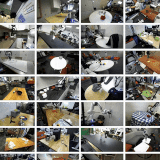
|
Robotics: Science and Systems (RSS), 2024 project page / arXiv / data visualizer We introduce DROID, the most diverse robot manipulation dataset to date. It contains 76k demonstration trajectories or 350 hours of interaction data, collected across 564 scenes and 84 tasks by 50 data collectors in North America, Asia, and Europe over the course of 12 months. We demonstrate that training with DROID leads to policies with higher performance and improved generalization ability. We open source the full dataset, policy learning code, and a detailed guide for reproducing our robot hardware setup. |
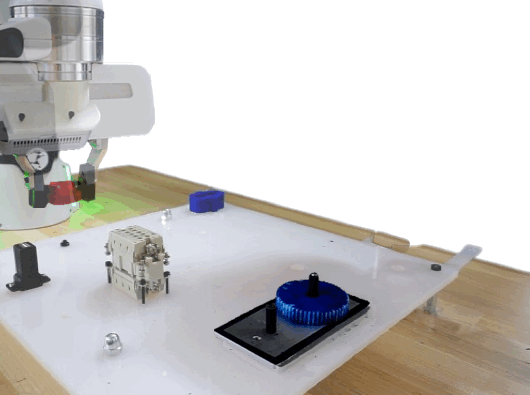
|
Huihan Liu, Shivin Dass, Roberto Martín-Martín, Yuke Zhu IEEE International Conference on Robotics and Automation (ICRA), 2024 project page / arXiv / code We introduce a runtime monitoring system that utilizes human interventions from on-the-job data to learn to classify dangerous states. Our model-based design enables us to rollout the future and preemptively ask for help from the human supervisor. Our method outperforms the baselines, with 23% and 40% higher success rates in simulation and on physical hardware, respectively. |
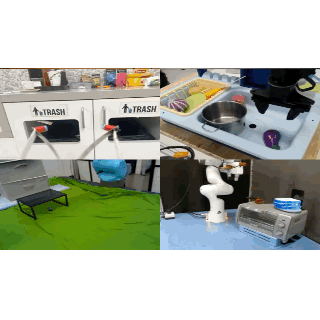
|
Open X-Embodiment Collaboration IEEE International Conference on Robotics and Automation (ICRA), 2024 Best Conferance Paper Award project page / arXiv / code
Introducing Open X-Embodiment Dataset, the largest robot learning dataset to date, with 1M+ real robot trajectories.
By training large transformer based policies (RT-1-X, RT-2-X) on this dataset, we find that co-training over multiple
embodiments substantially improves performance of the policies.
|
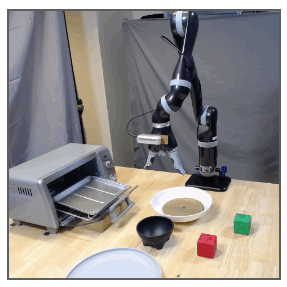
|
Shivin Dass*, Karl Pertsch*, Hejia Zhang, Youngwoon Lee, Joseph J. Lim, Stefanos Nikolaidis Robotics: Science and Systems (RSS), 2023 project page / arXiv / code We enable scalable robot data collection by assisting human teleoperators with a learned policy. Our approach estimates its uncertainty over future actions to determine when to request user input. In real world user studies we demonstrate that our system enables more efficient teleoperation with reduced mental load and up to four robots in parallel. |
|
The website template was inspired from here. |